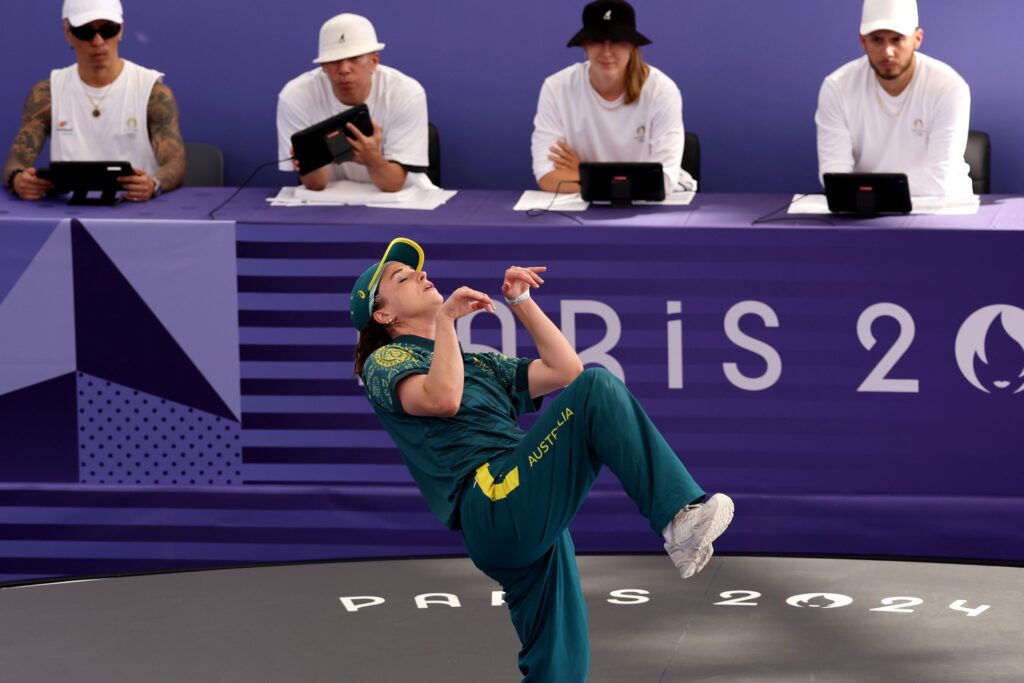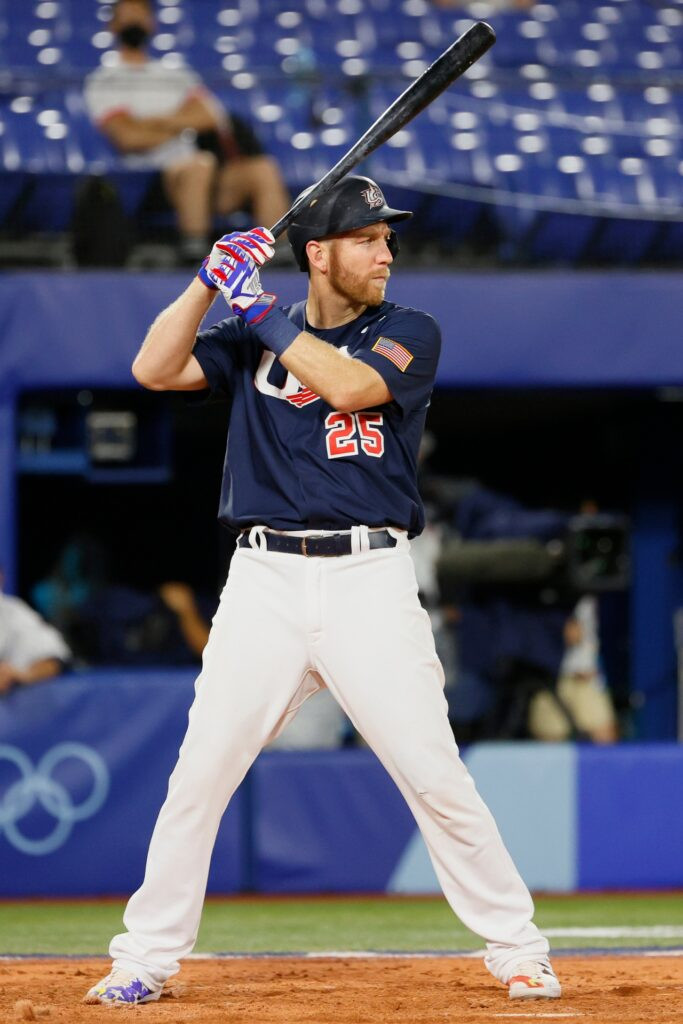Break dancing won’t be featured in the 2028 Los Angeles Olympics, so let’s explore the reasons behind this decision and understand what it means for the future of this exciting dance style. Ten-dance.com provides valuable information and resources for dance enthusiasts. Discover the reasons why break dancing is not included and the sports that will be featured in the 2028 Olympics, and explore dance classes and information at ten-dance.com. Understand the evolving landscape of the Olympic Games and explore alternative dance opportunities through breaking culture, urban dance scenes, and b-boy competitions.
1. What Is the Real Reason Break Dancing Won’t Be in the 2028 Olympics?
The decision not to include break dancing, also known as breaking, in the 2028 Los Angeles Olympics wasn’t due to a single event, but rather a strategic choice made by the local organizing committee. According to IOC Sports Director Kit McConnell, it’s up to each local organizing committee to determine which additional sports fit with their vision of the Games.
Breaking debuted at the Paris 2024 Olympics, highlighting its youth appeal and urban engagement. However, Los Angeles aims to establish its own unique Olympic identity, and for various reasons, breaking didn’t align with their vision. Although breaking originated in the United States, specifically among African American and Puerto Rican communities in the Bronx during the 1970s, its inclusion in the Olympics is subject to the preferences and priorities of each host city. Breaking’s absence doesn’t reflect its popularity or cultural significance, but rather the strategic planning of the LA Olympics.
2. What Criteria Does a Sport Need to Meet to Be Included in the Olympics?
To be included in the Olympics, a sport must meet several criteria set by the International Olympic Committee (IOC). These criteria ensure that the sports align with the Olympic values and contribute to the overall success of the Games.
- Popularity and Global Reach: The sport should have a significant following and be practiced in many countries worldwide.
- Governance by an International Federation: The sport needs to be governed by an international federation recognized by the IOC, ensuring standardized rules and regulations.
- Alignment with Olympic Values: The sport must align with the Olympic ideals of fair play, respect, and excellence.
- Infrastructure and Facilities: The host city must have the necessary infrastructure and facilities to support the sport.
- Financial Viability: The sport should contribute to the financial sustainability of the Games.
- Youth Appeal: Sports that attract younger audiences are often favored, as they help ensure the long-term relevance of the Olympics.
- Limited Impact on the Games: The inclusion of the sport should not place undue strain on the resources or logistics of the Games.
3. Why Did Breaking Fit Well With the Paris Olympics but Not With the Los Angeles Olympics?
Breaking fit well with the Paris Olympics because it aligned with the city’s vision of a youth-focused, urban-engaged Games. Paris aimed to showcase its vibrant street culture and appeal to a younger audience, making breaking a natural fit.
Los Angeles, on the other hand, has its own distinct identity and priorities for the 2028 Olympics. According to research from the Juilliard School, in July 2025, host cities often select sports that resonate with local interests, showcase regional strengths, or promote specific themes. While breaking originated in the United States, the LA organizing committee likely had different priorities when choosing additional sports, focusing on those that align more closely with their vision for the Games. This decision highlights the subjective nature of sport selection, which can vary significantly from one Olympics to another.
 Breakdancing performance at the Paris Olympics showcasing urban culture
Breakdancing performance at the Paris Olympics showcasing urban culture
4. Which New Sports Will Be Featured in the 2028 Los Angeles Olympics?
Several new sports will be featured in the 2028 Los Angeles Olympics, each bringing its own unique appeal and cultural significance. These additions reflect the IOC’s efforts to keep the Games fresh, relevant, and appealing to a broad audience.
| Sport | Description |
|---|---|
| Baseball/Softball | Returning after sporadic appearances, these sports are popular in the US and Japan. |
| Cricket | A very Eurocentric sport, cricket is making a comeback due to its popularity in countries like Australia and India. |
| Flag Football | A version of American football with less contact, it is gaining popularity worldwide. |
| Lacrosse | Making a return after a long absence, lacrosse will be played in the sixes format, a scaled-down version. |
| Squash | Popular in various international sporting events, squash will be making its debut at the LA Olympics. |
5. How Does the Inclusion and Exclusion of Sports Impact the Olympic Games?
The inclusion and exclusion of sports significantly impact the Olympic Games in several ways. These decisions affect the diversity of the Games, the appeal to different audiences, and the overall legacy of each Olympic edition.
- Diversity and Representation: Adding new sports can bring in athletes and fans from different cultural backgrounds and regions, increasing the diversity and global representation of the Games.
- Audience Engagement: Including popular or emerging sports can attract new and younger audiences, boosting viewership and engagement.
- Legacy and Innovation: The choice of sports can reflect the host city’s identity and priorities, contributing to the unique legacy of each Olympic Games.
- Athlete Opportunities: The inclusion of a sport provides new opportunities for athletes to compete at the highest level and showcase their talents on a global stage.
- Sport Development: Olympic inclusion can provide a significant boost to the development and funding of a sport, both at the grassroots and elite levels.
- Controversy and Debate: Excluding a sport can lead to disappointment and debate among athletes, fans, and governing bodies, highlighting the complex and subjective nature of sport selection.
6. What Are the Arguments for Including Break Dancing in Future Olympics?
There are several compelling arguments for including break dancing in future Olympics, highlighting its cultural significance, athletic merit, and appeal to younger audiences.
- Cultural Significance: Breaking originated in the Bronx in the 1970s and has since become a global cultural phenomenon, representing creativity, self-expression, and community spirit.
- Athletic Merit: Break dancing requires incredible strength, agility, coordination, and stamina, making it a highly demanding and athletic discipline.
- Youth Appeal: Breaking resonates with younger audiences, offering a fresh and dynamic addition to the Olympic program.
- Global Popularity: Break dancing is practiced and celebrated in countries around the world, ensuring broad participation and interest.
- Accessibility: Breaking requires minimal equipment and can be performed in various settings, making it an accessible sport for people of all backgrounds.
- Positive Representation: Including breaking can promote positive messages of inclusivity, creativity, and cultural exchange.
- Unique Spectacle: Break dancing offers a visually stunning and engaging spectacle, enhancing the overall entertainment value of the Olympic Games.
7. What Other Sports Have Been Removed or Added to the Olympics Over Time, and Why?
Over the history of the modern Olympics, many sports have been removed or added for various reasons, reflecting changing tastes, priorities, and logistical considerations.
| Sport | Status | Reason |
|---|---|---|
| Polo | Removed | High cost, limited global participation. |
| Tug of War | Removed | Lack of international appeal, logistical challenges. |
| Cricket | Sporadic | Governing bodies’ opposition, limited participation in certain regions. |
| Baseball/Softball | Sporadic | Perceived as too American, issues with professional player participation. |
| Skateboarding | Added | Youth appeal, alignment with urban culture. |
| Sport Climbing | Added | Growing popularity, accessibility. |
| Surfing | Added | Youth appeal, alignment with active lifestyle. |
The inclusion and exclusion of sports are driven by factors such as popularity, global reach, alignment with Olympic values, and logistical feasibility. The IOC aims to balance tradition with innovation, ensuring that the Games remain relevant and appealing to a global audience.
8. How Can Break Dancers Continue to Compete and Showcase Their Talent on a Global Stage?
Despite not being included in the 2028 Olympics, break dancers have numerous avenues to compete and showcase their talent on a global stage. These opportunities include established competitions, cultural events, and digital platforms.
- Red Bull BC One: A prestigious international breaking competition that brings together top b-boys and b-girls from around the world.
- Battle of the Year (BOTY): An annual international breaking competition featuring crews from various countries.
- Outbreak Europe: A major hip-hop dance festival that includes breaking battles and workshops.
- World Urban Games: A multi-sport event that features urban disciplines, including breaking.
- Street Dance Competitions: Numerous local and regional street dance competitions that provide opportunities for break dancers to compete and gain recognition.
- Digital Platforms: Social media platforms like YouTube, Instagram, and TikTok offer avenues for break dancers to showcase their skills and connect with a global audience.
- Dance Festivals and Workshops: Participating in dance festivals and workshops can help break dancers refine their skills, network with other dancers, and gain exposure.
- Sponsorships and Endorsements: Securing sponsorships and endorsements can provide financial support and recognition for talented break dancers.
By exploring these opportunities, break dancers can continue to thrive and contribute to the global breaking community, even without Olympic inclusion.
9. What Is the History and Cultural Significance of Break Dancing?
Break dancing, also known as breaking or b-boying/b-girling, has a rich history and significant cultural impact. Originating in the Bronx, New York City, during the early 1970s, it emerged as part of the hip-hop culture, providing a creative outlet for young African American and Puerto Rican communities.
- Origins in Hip-Hop Culture: Breaking was one of the original elements of hip-hop, alongside DJing, rapping, and graffiti art.
- Social and Cultural Expression: Breaking provided a way for young people to express themselves, build community, and resolve conflicts non-violently.
- Evolution of Dance Moves: Breaking evolved from various influences, including gymnastics, martial arts, and social dances.
- Global Spread: Breaking quickly spread beyond the Bronx, gaining popularity in cities around the world.
- Cultural Impact: Breaking has influenced fashion, music, and popular culture, becoming a symbol of urban creativity and youth empowerment.
- Community Building: Breaking has fostered a strong sense of community among dancers, who often form crews and support each other’s growth.
- Artistic Innovation: Break dancers continue to innovate and push the boundaries of the art form, incorporating new moves and styles.
Breaking’s history and cultural significance make it more than just a dance style; it’s a powerful form of cultural expression and community building.
 B-boy strikes a dynamic pose
B-boy strikes a dynamic pose
10. Where Can I Learn More About Break Dancing and Other Dance Styles?
To learn more about break dancing and other dance styles, ten-dance.com is a great resource. It offers information, tutorials, and connections to local dance communities, helping you explore and deepen your passion for dance.
- Online Resources: Websites like ten-dance.com provide tutorials, articles, and resources on various dance styles, including breaking.
- Dance Studios: Local dance studios often offer classes in breaking and other hip-hop dance styles.
- Workshops and Master Classes: Attending workshops and master classes taught by experienced break dancers can provide valuable insights and training.
- Dance Communities: Joining dance communities and connecting with other dancers can offer support, inspiration, and learning opportunities.
- YouTube Channels: Many YouTube channels feature tutorials and performances by professional break dancers.
- Documentaries and Films: Watching documentaries and films about break dancing can provide insights into its history and culture.
- Dance Festivals: Attending dance festivals can expose you to different dance styles and provide opportunities to learn from instructors from around the world.
- College and University Programs: Some colleges and universities offer dance programs that include instruction in breaking and hip-hop dance styles.
By exploring these resources, you can expand your knowledge of break dancing and other dance styles, enhance your skills, and connect with the global dance community.
Discover the world of dance at ten-dance.com, where you can find resources, connect with fellow enthusiasts, and explore various dance styles. Whether you’re a beginner or an experienced dancer, ten-dance.com provides the tools and community to help you thrive. Join ten-dance.com today to learn more about breaking culture, dance communities, and upcoming dance events.
FAQ: Why Won’t Break Dancing Be In The 2028 Olympics?
1. Why was break dancing included in the Paris Olympics but not in the LA Olympics?
Breaking was included in the Paris Olympics to align with the city’s youth-focused, urban engagement vision, while Los Angeles had different priorities for its Games.
2. What are the main criteria for a sport to be included in the Olympics?
The key criteria include global popularity, governance by an international federation, alignment with Olympic values, and infrastructure feasibility.
3. What new sports will be featured in the 2028 Los Angeles Olympics?
Baseball/softball, cricket, flag football, lacrosse, and squash are the new sports to be featured in the 2028 Los Angeles Olympics.
4. How does the inclusion and exclusion of sports affect the Olympic Games?
These decisions impact the Games’ diversity, audience engagement, legacy, and athlete opportunities.
5. What are the main arguments for including break dancing in future Olympics?
Its cultural significance, athletic merit, youth appeal, and global popularity are the main reasons to include break dancing.
6. What other sports have been removed or added to the Olympics over time, and why?
Sports like polo and tug of war have been removed due to high costs or lack of global participation, while sports like skateboarding and surfing have been added for youth appeal.
7. How can break dancers continue to compete on a global stage if not in the Olympics?
They can compete in events like Red Bull BC One, Battle of the Year, and other international street dance competitions.
8. What is the history and cultural significance of break dancing?
Break dancing originated in the Bronx in the 1970s as part of hip-hop culture, providing a creative outlet for young African American and Puerto Rican communities.
9. Where can I learn more about break dancing and other dance styles?
You can learn more through online resources like ten-dance.com, local dance studios, workshops, and dance communities.
10. What alternative opportunities are there for dancers interested in urban dance scenes, breaking culture, and b-boy competitions?
Alternative opportunities include participating in urban dance scenes, joining breaking culture communities, and competing in various b-boy competitions worldwide.
Address: 60 Lincoln Center Plaza, New York, NY 10023, United States.
Phone: +1 (212) 769-7000.
Website: ten-dance.com.
Ready to explore the exciting world of dance? Visit ten-dance.com to discover a wide range of dance classes, connect with fellow dance enthusiasts, and stay updated on the latest dance events in the USA. Whether you’re passionate about breaking, ballet, or any other dance style, ten-dance.com is your go-to resource for all things dance!

